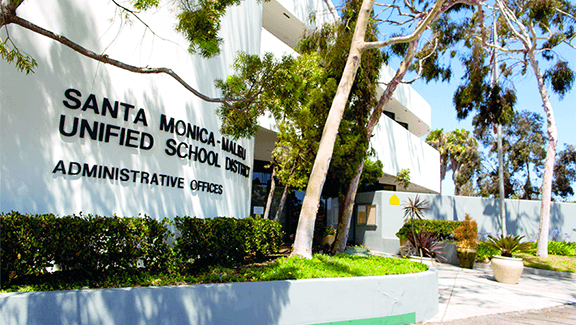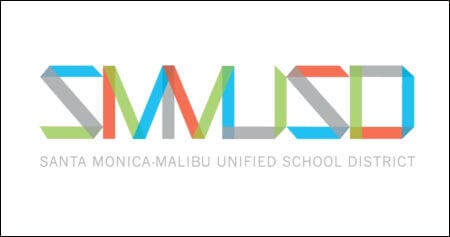
 The Santa Monica Malibu United School District is accused of overspending and ignoring input from community members as it rushes to issue another $280 million in bond debt.
The Santa Monica Malibu United School District is accused of overspending and ignoring input from community members as it rushes to issue another $280 million in bond debt.
An April 29 letter to the school board signed by representatives of six prominent community groups representing thousands of resident families has gone without response, according to Tricia Crane, president of the Northeast Neighbors Association.
>> SEE ALSO: Bitcoin For Pizza? It Could Happen At One Santa Monica Restaurant
Crane’s group — along with Friends of Sunset Park, Pico Neighborhood Association, Santa Monica Mid City Neighbors, Wilshire Montana Neighborhood Coalition and Santa Monica Architects for a Responsible Tomorrow — is urging the SMMUSD to immediately put the brakes on several costly building projects and halt the issuance of new bonds until community members can have input and financial oversight can be demonstrated.
“Spending money, without a plan, just because the money is there, is not a plan,” the letter states. “Moreover, it is very expensive.”
Revenue from the sale of a new bond would be used to complete projects at various school sites.
A vote on the bond issuance is scheduled for today, Thursday, May 20.
“The school board needs to take the community seriously and put this vote on hold,” Crane tells The Sun.
A representative for SMMUSD has confirmed that the board members did receive the letter but did not provide further comment.
Below is a copy of the letter that was delivered by email.
———————-
Dear School Board, Superintendent Drati, Carey Upton and Melody Canady:
Purpose of This Request
We are writing to oppose items F (Campus Assessments), G2 (Franklin/Lincoln Projects), J4 (JAMS Project), F8 (McKinley/Grant/Rogers Projects), and F9 (McKinley Construction Manager) and support only F3 (Grant/Franklin/Lincoln Historic Resources Inventory) and F6 (Rogers/McKinley/Roosevelt Historic Resources Inventory). Our opposition stems not only from the absence of process and master planning, but also from an absence of project management accountability and transparency.
Immediate Action Required
1) The school board should immediately halt any further bond spending EXCEPT:
a) Projects that have commenced hard cost expenditures such as demolition or are in process such as the Discovery building (including cafeteria abatement and demolition)
b) Essential new maintenance projects for existing facilities, such as HVAC and bathrooms
2) New projects which have not proceeded to hard cost expenditure (e.g. demolition) should remain halted until:
a) A full audit of capital expenditures has been conducted
b) The Bond Oversight Committee is charged with, and undertakes, a review of cost-saving measures per Education Code 15278
c) All master plans are finalized and approved, with a school board vote at a public hearing
d) Prior to the commencement of any project set forth in an approved master plan, all scope and costs relating to such project must be presented to the school board as a Major Action Item and approved by a vote. Such approval must include the full scope of the project, programming (including evidence of improved educational outcomes), and budget (both hard and soft capital costs and all operating costs for the both the facility and the programming)
3) SMMUSD should immediately implement structured capital expenditure reporting for all projects, including both new construction and maintenance. A template is attached as Exhibit A.
Even though soft cost expenditures such as planning and architect fees may have occurred on new projects, if such projects are ultimately excluded from an approved master plan, cancellation will save up to 9x the amounts spent so far assuming planning costs are 10% of total project costs. Moreover, cost savings from avoided overruns and change orders that result from implementation of project capital expenditure reporting will likely help recoup any discarded soft sunk costs from such discontinued projects.
New Bonded Indebtedness
SMMUSD issued a press release Friday stating plans to issue $280 million in bonds to continue the ongoing, and deliberately unstructured, spending.
Spending money, without a plan, just because the money is there, is not a plan. Moreover, it is very expensive. The interest on the $280 million in new bonds could add between 40% and 60% to the total cost of the projects by the time the bonds are paid off (potentially $0.5 billion all in).
There should be no new indebtedness until agreed and approved master plans are in place for each campus. Only then will actual requirements be known.
Given that the currently low financing costs are driven by the overall market, they will likely stay low for the time it takes to get a master plan agreed. As such, there should be little to no opportunity cost in waiting for the next bond issuance.
District Financial Performance and Future Financing Costs
The School Board announced on Friday, April 23, 2021, that the bond rating agency Moody’s has downgraded SMMUSD’s bond rating from Aaa to Aa1. Per the district’s press release, the Moody’s action was taken in response to the District’s “…debt, pension and OPEB liabilities” that were cited as “high, and its fixed cost ratio is elevated.”
Fixed cost ratio is another way of saying “structural deficit,” which the district has known about for at least 8 years and which has been a point with the ratings agencies for the last several years.As a way to ensure continued access to lower financing costs, the District should immediately work to permanently eliminate the structural deficit it has acknowledged since 2013 and which has caused the Los Angeles County Office of Education to mandate cost cuts under threat of budget and forecast noncertification.
It should also present a plan to stop the ongoing increase in unfunded pension, OPEB and other long-term employment liabilities.
Addressing these two issues, which were the cause of last week’s District ratings downgrade to Aa1, will directly address Moody’s new credit criteria and provide scope for regaining a Aaa rating, which will lower borrowing costs.
Project Spending Accountability
In the upcoming April 29, 2021 Special Meeting, “Staff will be asking for direction from the Board of Education to allocate funds for the proposed Measure SMS projects.” The issues surrounding these projects are recurring and reflect a fundamental absence of accountability. Projects listed in the agenda are the same projects that were rejected by the community at the December 9, 2020 school board meeting and at the “community meetings” both prior to and since then.
Furthermore, the District has not updated the draft master plans to account for open space and recreational space, sufficient toilets to comply with current code for new construction, and preservation of historic resources. No proposed motion for a vote on either the master plans or projects is included in the agenda, and the master plans from which the projects derive have never been approved by a school board vote in a Major Action Item.
The National Historic Trust has taken notice of the planned destruction and has placed the Samohi History Building on its “threatened” list, and almost 6,000 people have signed the petition to save the History Building. The school board continues to ignore the fiscal and community trust implications of its ill-advised plans.
Responsible, Effective and Accountable Capital Project Financial Management
To maximize the effectiveness of approved bond funds, we are requesting that the District immediately implement a structured and regularly recurring capital project expenditure reporting process. The structured analyses should include fixed original budgets that fully include all costs, hard and soft, and the tracking of changes to estimated final project costs. We will separately forward a template that addresses all reporting criteria. The potential cost savings from avoided cost overruns and scope creep accompanying active and structured monitoring will likely be significant.
Furthermore, the District should fully implement the provisions of Education Code section 15278, the statute requiring the use of an independent citizen’s oversight committee when bonds are issued. The statute includes multiple analyses to reduce costs. The minutes of the Bond Oversight Committee do not reflect any such analyses, nor has the public been provided with any such analyses by staff.
The Inflection Point for Action Has Been Reached
The unstructured, undisciplined and essentially unmonitored capital spending process is unacceptable. The absence of effective operating cost management and focus is unacceptable. Both directly impact the residents and the students.
Adoption of the recommendations outlined above is essential.
Sincerely,
Friends of Sunset Park Board
Northeast Neighbors Board of Directors
Pico Neighborhood Association Board
Santa Monica Mid City Neighbors Board
Board of Wilshire Montana Neighborhood Coalition
Santa Monica Architects for a Responsible Tomorrow
Don’t miss out on a single story!
Follow us on Twitter * Follow us on Facebook * Submit a news tip
Check out our complete story archive
- Beloved Italian eatery Guidos set to close in May - April 12, 2025
- Venice Beach plans inaugural half marathon and 5K - April 12, 2025
- How you can help Pacific Palisades homeowners - February 21, 2025



